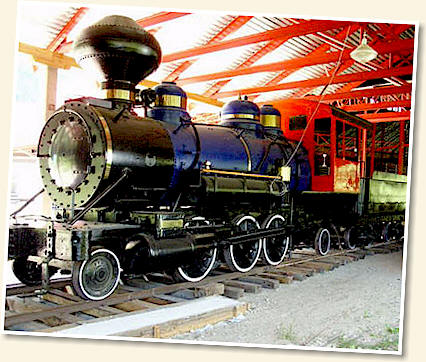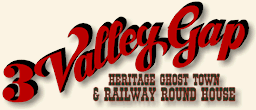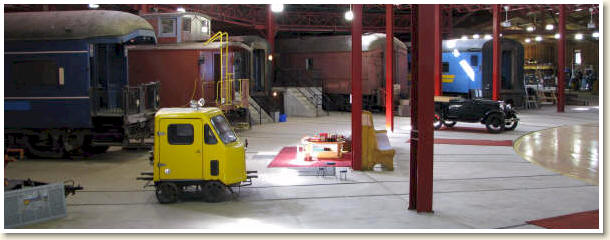|
Naturally, the locomotives would be very large and
difficult to move around, and the amount of equipment
required to maintain them was tremendous. As well,
unlike the modern diesel locomotives of today, a steam
locomotive was designed to go forward, and seldom backed
up. To solve this, a turntable
 mechanism was utilized to
rotate the locomotives to various specialized workshops
in the roundhouse. mechanism was utilized to
rotate the locomotives to various specialized workshops
in the roundhouse.
Most of
the steam locomotives were designed for specific
services - freight or passenger, mountain or prairie,
and as such, steam locomotives seldom ventured more than
a few divisional points from home. Thus there was
usually a turntable and roundhouse built approximately
every one hundred miles (to a maximum of two hundred
miles).
The
number of stalls in a roundhouse varied from as little
as two up to about sixty or so. This depended on the
location of the divisional point and the number of
locomotives working in that portion of the railway.
The
Roundhouse at 3 Valley Gap, is home to the largest fully
operational covered turntable in North America. It has
24 bays and is approximately 300 feet in diameter. The
complex contains a Back Shop, Pattern Shop, and a
Railway Coach Repair & Carpentry Shop. The lobby
entrance to the Railway Roundhouse is a replica of The
Arlington Court
building
from Revelstoke, B.C. This stately building has items
that you would
 expect
to find in a lavish home in the early 1900ís.
Thoughtfully displayed are antique pianos and organs,
hats, dolls, clothing, and a wedding collection. expect
to find in a lavish home in the early 1900ís.
Thoughtfully displayed are antique pianos and organs,
hats, dolls, clothing, and a wedding collection.
 |

